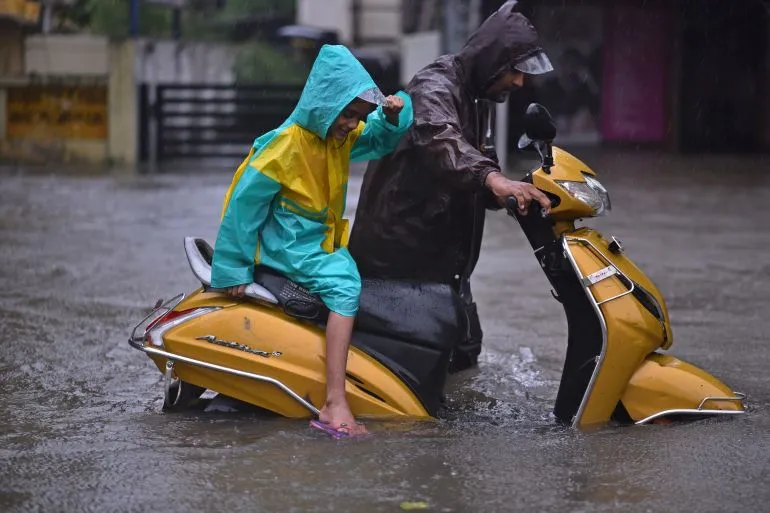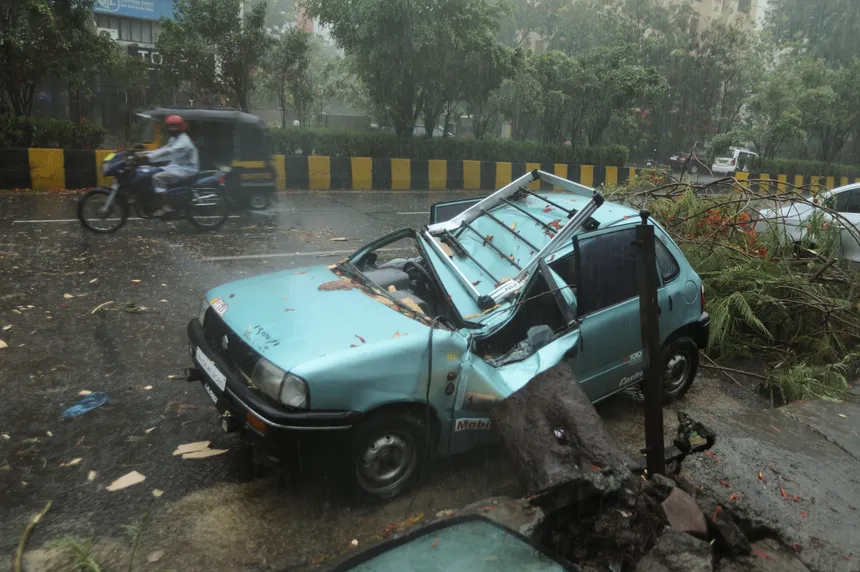As cyclone Biparjoy made landfall in western India and southern Pakistan, a vast swathe of the region was bracing for a new deluge, a repeat of the devastating floods that struck the area last year. The Arabian Sea churned up rough waters, with rain lashing the shores and skies darkening ominously. Dust storms hampered evacuation and rescue efforts on land, as authorities scrambled to respond to the impending disaster.
The cyclone was expected to intensify over the next two to three days, with wind speeds gusting up to 86mph before slowing down in India’s Gujarat province. In Pakistan, Keti Bandar, a town in the flood-ravaged southern Sindh province, was also in Biparjoy’s path. The National Disaster Management Authority chief, Lt Gen Inam Haider Malik, estimated that 73,000 people had been evacuated to safer areas and were being provided shelter and sustenance.
Tens of thousands of people in India were also being relocated to relief camps, with the total number of evacuees topping 75,000. The Indian Meteorological Department (IMD) warned that the cyclone had the potential to inflict heavy damage, especially with a storm surge of two to three metres above the astronomical tide expected in low-lying areas.

Cyclone Threat Looms Over Western India
Gujarat Health Minister Rushikesh Patel said elaborate arrangements had been made to restore essential infrastructure and services once the cyclone passed. Meanwhile, Pakistani Prime Minister Shahbaz Sharif tweeted that the government had taken all necessary measures to ensure the safety of those in the storm’s path. Local charities and aid agencies were also providing support to the affected communities.
The region is no stranger to cyclone disasters. In 1998, a cyclone devastatingly hit Gujarat state, claiming over 1,000 lives and causing extensive damage. Another cyclone in 1965 struck Sindh province and the city of Karachi, killing over 10,000 people. Amidst the uncertainty and chaos, authorities on both sides were working tirelessly to mitigate the effects of the storm, with the United Nations monitoring the situation from afar.
As the storm raged on, residents of coastal towns and cities were hunkering down, waiting for the worst to pass. In India, markets and businesses were closed, while in Pakistan, authorities were doing their best to provide for the evacuees. The fate of those caught in the cyclone’s path was uncertain, but one thing was clear: the region was once again facing the fury of nature, with the cyclone’s destructive power still to be fully assessed.











































